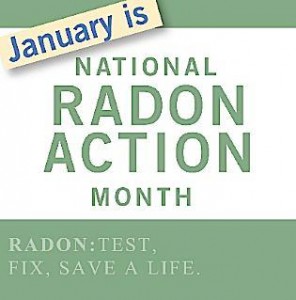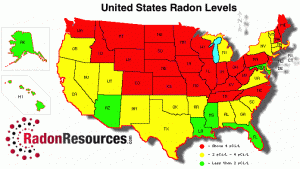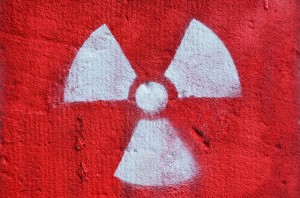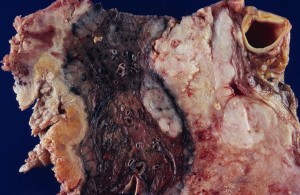Most people hear about radon through the grapevine or read about how dangerous it is on a popular blog or news site. Sadly, that’s usually about as far as it goes. Once people learn about the topic most write it off as not that serious and move on with their lives. They couldn’t be any more wrong.
Worse yet, it’s a common misconception that radon isn’t a problem in your area or that your home is immune. Southerners seem to think it’s a northern problem, and northerners tend to believe the opposite. The truth is that it’s a naturally ocurring gas, released as a radioactive decay product from elements like Uranium commonly found in soil and rock. In other words, it can be a problem anywhere regardless of geographical location. Worse yet, it can seep into any home regardless of the composition. Even newer homes built with radon resistant construction are still susceptible to this silent killer.
In fact, you could be living with extremely dangerous levels of radon gas in your home right now and be none the wiser. It is odorless, colorless and tasteless. It’s pretty dense too, which means even though most of the time it remains on lower levels of a home, it can still seep in pretty easily.
In addition, because of it’s makeup radon gas is virtually indetectable. The only way to discover its presence, is to test specifically for it.
It’s Time to Get Serious about Radon Gas
 In the spirit of National Radon Action Month — which is all through the month of January — it’s time everyone gets serious about radon gas and its associated dangers. Are you one of the many who don’t feel it’s much of a problem for your family? Think again.
In the spirit of National Radon Action Month — which is all through the month of January — it’s time everyone gets serious about radon gas and its associated dangers. Are you one of the many who don’t feel it’s much of a problem for your family? Think again.
Radon is responsible for the demise of more than 21,000 Americans each year who die from radon-induced lung cancer. These are people of all ages from all walks of life too.
It is the second leading cause of lung cancer in many countries including the US, Canada, and the UK. In the US, it’s the single leading cause of lung cancer in non-smokers. Yes, that’s right exposure to radon gas is more deadly than exposure to second hand smoke.
An estimated one in fifteen homes — we’ll repeat that for effect, 1 in 15 homes — in the US have elevated radon levels inside, and most homeowners have no clue. Exposure to radon gas at the recommended action limit of 4.0 pCi/L (picocuries per liter) as set by the US EPA is the equivalent of smoking nearly a half a pack of cigarettes per day. For every additional 15 pCi/L of exposure, it’s equal to smoking a full pack of cigarettes. In other words, if you find the radon gas levels in your home are 30 pCi/L it means you’ve pretty much been smoking over two packs of cigarettes per day. Compound that with how many years you’ve been living in said home, and you can see how it adds up. Exposure to radon gas severely increases the risk of lung cancer.
Radon Gas Exposure Can Be Prevented Easily
Fortunately, all of this can be prevented pretty easily. You can prevent your family’s exposure to deadly radon gas simply by testing your home, or hiring an experienced professional to do so. If elevated levels are found, a mitigation system can be installed to ventilate the gas. Believe it or not, neither of these processes are expensive or complicated.
You can purchase a DIY radon gas testing kit at any local hardware store or online. If you don’t want to do the work yourself you can hire a local contractor to come test your home. If elevated levels are found, you can hire someone to install the mitigation system for a reasonable price. Want a price estimate? The most expensive mitigation system can cost anywhere from $1,700 – $2,400 depending on the work that’s done and who you hire. Sure that may seem like a pretty big chunk of cash to pony up at once, but it’s a small price to pay to keep you and your family in good health.
Test Your Home for Radon Gas Today, and Then Help Spread Awareness
 Every single homeowner or resident should have their home tested for radon gas. If you’re a renter, encourage your landlord to test the residence. If you own your home, then pay a visit to your local hardware retailer and pick up a DIY radon testing kit — you can also find them online. If you don’t want to bother with it, then contact a local radon professional and have them come check out your home — make sure they are certified though!
Every single homeowner or resident should have their home tested for radon gas. If you’re a renter, encourage your landlord to test the residence. If you own your home, then pay a visit to your local hardware retailer and pick up a DIY radon testing kit — you can also find them online. If you don’t want to bother with it, then contact a local radon professional and have them come check out your home — make sure they are certified though!
Once you’ve tested your home and know the radon gas levels — and have taken action if necessary — then it’s time to share your experience with others. Don’t just focus on keeping yourself and your family’s health in the clear, inform your friends, extended family and even colleagues about the dangers of radon gas. The more people that know about this silent killer and its many associated dangers the better.
Our main goal here is to reduce that large 21,000 number of people dying from radon-induced lung cancer every year especially since it can be prevented. It’s even worse when you consider the general costs with treating lung cancer, as opposed to the cost of a radon gas testing kit or mitigation system.
Radon Gas Causes Lung Cancer, So What?
Similar to how smokers share a sentiment that cancer will never happen to them, despite the fact that they’re smoking a full pack of cigarettes — or more — per day, many people believe that they won’t ever get lung cancer from exposure to radon gas. In reality, because exposure increases the risk there is a chance that you may never get it, that’s absolutely right. However, there’s also a chance that you may get it by spending just an hour in a home with elevated levels — and it doesn’t even have to be your own home!
Lung cancer has one of the highest mortality rates of any form of cancer. This is because a majority of treatments are ineffective yes, but it’s also because of the nature of the disease. As with most forms of cancer, if you catch it early by all rights you should be okay. The problem is, by the time patients begin to show symptoms, the disease has usually progressed well beyond a curable state. That means, by the time a doctor diagnoses someone more often than not it’s too late. The best option then is to try and prevent it entirely by avoiding some of the more prominent causes. Being that radon gas is the second leading cause of lung cancer for smokers and non-smokers the world over, you’ll want to avoid being exposed to the deadly gas.
Radon Gas Can and Will Kill You, Don’t Wait to Test
Test your home today. Don’t wait. Encourage management to test your work for radon gas, encourage your friends and family to test their home, or encourage everyone you meet in public to test their home. Radon gas can and will kill you slowly, so if it’s collecting in your home you need to get it out. The only way you can do that, is by testing your home and finding out whether or not it’s a problem. The whole concept is real simple. Don’t spend time in denial believing that it won’t ever happen to you or your family. It may already be happening. You may be exposed to this silent killer every day and night you spend in your house.
Test as soon as possible, take action and then spread the word!





